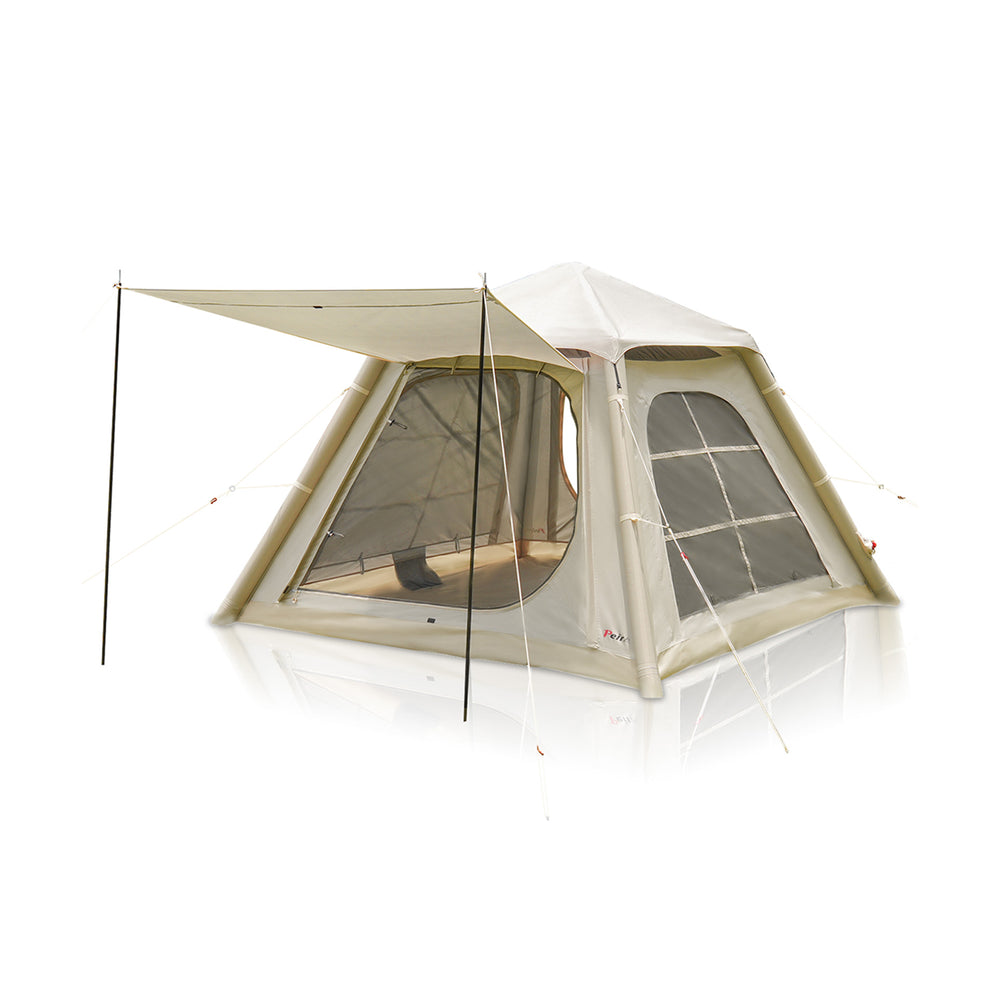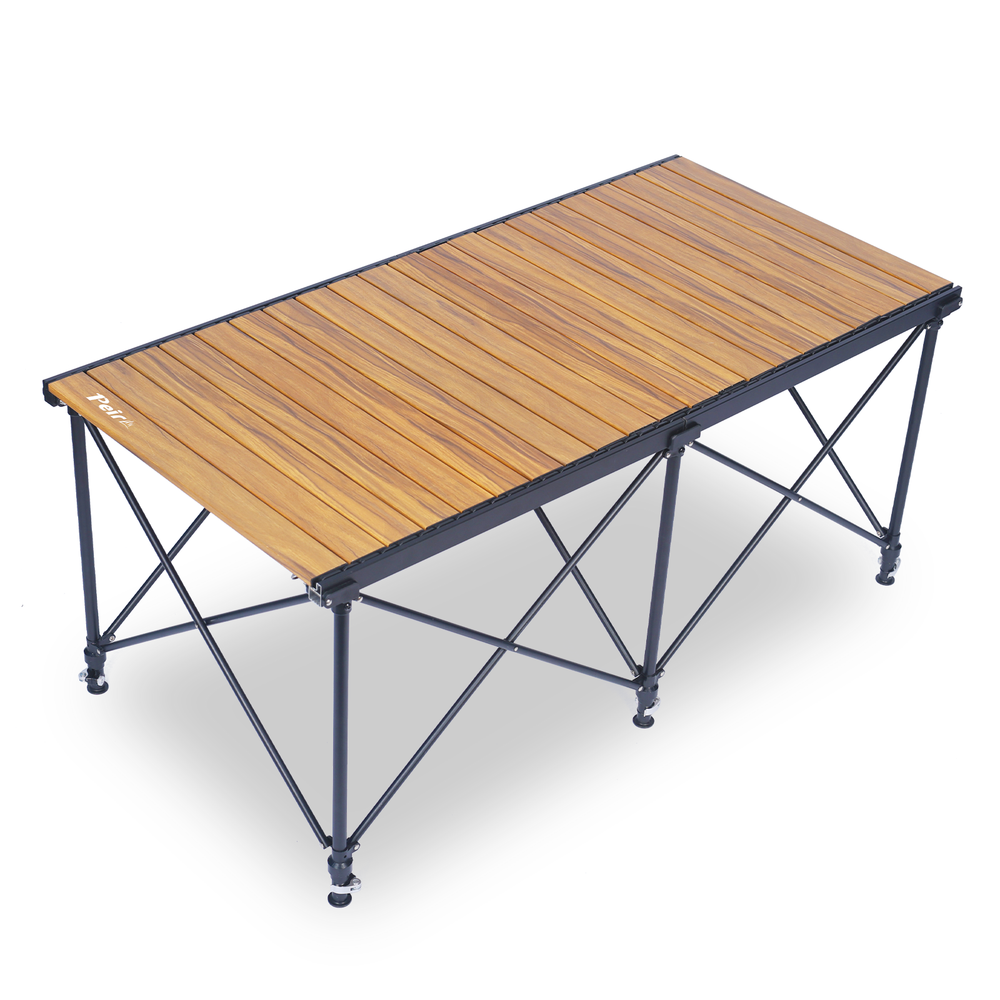Portable power stations have exploded in popularity in recent years as reliable backup energy sources for outdoor activities and emergency preparedness. However, with a wide range of power outputs and limitations among different models, many consumers find themselves wondering what devices and appliances these portable power stations can actually effectively power. In this comprehensive guide, we will explore the most common appliances that portable power stations can operate, along with helpful tips for choosing the right portable power station to suit your specific needs.
Heading outdoors is a blast, surrounded by nature's beauty. But, keeping your food and drinks cool is a must for a seamless experience. This leads us to a crucial question: Can a Portable Power Station Run a Refrigerator? In this guide, we'll tackle that query, along with key factors to consider, the pros and cons, and tips for choosing the right portable power station. Let's make sure your outdoor escapades are both exciting and hassle-free.
How to Know If Your Portable Power Station Can Power an Appliance?
It goes without saying that the kind of appliances a portable power station can run is determined by its storage capacity and output, as well as the wattage of appliances you wish to run at the same time. Smaller items, phones, fans, and tablets for example, can be charged by most portable power stations. Remember to make sure to check if the portable power station that you're going to buy can run more power-consuming devices.
Extra watts should be added to your portable power station capacity to make room for the appliance's surge power or startup current. Normally, a machine's operational capacity, such as an AC, is usually always less than the surge capacity required to switch it on. When these appliances are first turned on, the surge power consumes twice, or even three times, the typical power. However, once they’re in normal operation, the device will use standard power and consume the same amount of electricity continuously.
How Does A Portable Power Station Work?
Portable power stations, popularly known as battery packs or charge supplies, use the stored energy in the battery to generate power. This surplus energy is capable of powering multiple types of electronic equipment and utility appliances. The device is installed with a replaceable battery that can be charged from the wall socket, from the car, or from the sun with a solar panel, according to the different models.
Once the battery is fully charged, both the station and charging equipment can be switched off, and the station will be an output source of mobile energy. Therefore, it is one of the most appropriate instruments in emergencies when backup electricity is not readily available or access to traditional sources is not allowed.
The powerhouse consists of a battery, an inverter, and a group of ports for linking electronic devices. Electric energy is stored in the battery, and this power can be converted into whatever type (AC or DC) your household devices require. The converted electricity is finally delivered to your devices via the outlets or ports.
Mini Fridges
In addition to larger portable refrigerators, smaller "mini" fridges can also operate very effectively off many mid-range and larger capacity portable power stations. These compact refrigeration units designed for dorm rooms, offices, mancaves, and other small spaces are highly energy efficient - often using only 50 watts or less when running.
This ultra-low power draw allows even modest 300 to 500-watt portable power stations to easily operate a mini fridge for over 24 hours straight in most cases. Just be sure any mini fridge is designed to operate on standard 120-volt AC household power rather than a 12-volt DC car adapter.
Pros and Cons Of Using a Portable Power Station Run a Refrigerator
As mentioned above, we recommend using a portable power station to power a mini-fridge.
However, for a full-size refrigerator, a portable power station may not be capable of powering it for a longer time. Therefore, we recommend using it primarily during power outages. If you intend to power the full-size refrigerator for an extended duration, it is advisable to switch to a dedicated power system rather than relying on a portable power station.
Let’s take a look at the pros and cons of using a portable power station to run a refrigerator.
Pros of Using a Portable Power Station to Run a Refrigerator
- Portability: Portable power stations are designed for mobility, allowing you to take them anywhere, including camping trips, outdoor events, or during power outages. This portability ensures that your refrigerator remains functional in various settings.
- Versatility: Portable power stations are not limited to running refrigerators; they can power a variety of electronic devices, providing a versatile solution for your outdoor and emergency power needs.
- Silent Operation: Unlike traditional generators, many portable power stations operate silently. This is advantageous for maintaining a peaceful outdoor environment without the noise typically associated with generator use.
- Clean Energy: Most portable power stations use lithium-ion batteries, making them an eco-friendly option compared to traditional generators that rely on fuel combustion. This contributes to a cleaner and greener energy solution.
- Ease of Use: Portable power stations are user-friendly, and often equipped with simple interfaces and multiple outlets. This makes them accessible to users with varying technical expertise.
- No Fuel Requirements: Unlike traditional generators, portable power stations do not require fuel, reducing the need for fuel storage, potential spillage, and the associated safety concerns. This makes them a safer and more convenient option.
- Low Maintenance: portable power stations generally have minimal maintenance requirements. There are no oil changes or complex mechanical components to manage, simplifying their upkeep.
Cons of Using a Portable Power Station to Run a Refrigerator
- Limited Capacity: Portable power stations may have limited power capacity compared to traditional generators. This limitation could affect the runtime of a refrigerator, especially if it's a high-power model or if you intend to run it for extended periods.
- Dependency on Battery: Portable power stations rely on battery storage, and once the battery is depleted, it needs recharging. If you're in a situation without access to a power source, you may face interruptions in refrigerator operation until the power station is recharged.
- Initial Cost: The upfront cost of a quality portable power station can be higher compared to traditional generators. However, this cost may be offset by the long-term benefits and reduced maintenance expenses.
- Charging Time: The charging time of portable power station batteries can vary. If you need a quick turnaround for recharging, this might be a limitation. Fast-charging models are available, but they may come at an additional cost.
- Weather Dependency: Extreme weather conditions, such as very high or low temperatures, can impact the performance of the battery in a portable power station. This may reduce its efficiency, especially in challenging environments.
- Limited Power for Larger Appliances: Some portable power stations may not provide sufficient power for larger or high-energy appliances, such as large refrigerators with multiple features. It's crucial to match the power station's capacity with the refrigerator's requirements.
- Non-Suitable for Continuous Use: Portable power stations are designed for intermittent use and may not be suitable for continuous operation. This limitation could affect scenarios where a refrigerator needs to run continuously for an extended period.
Note: The pros and cons may vary based on the specific model and brand of the portable power station. It's essential to carefully evaluate the features and specifications of the chosen power station to ensure it meets your refrigerator's requirements and your intended use.
How To Select The Best Portable Power Stations To Run a Refrigerator?
There are two types of refrigerators: mini-fridges (with power requirements ranging from 50W to 100W) and full-size refrigerators (with power needs ranging from 100W to 800W). Each of them requires different powers for startup and operation.
Now, let's explore how to select the ideal portable power station for each.
For Mini-Fridges
1. Power Capacity
Assess the power requirements of your mini-fridge. Select a portable power station with a power output that exceeds the wattage needs of the mini-fridge, providing a safety margin for efficient and reliable operation.
For example, if your mini-fridge requires 100 watts, consider a power station with at least 150 watts to accommodate fluctuations.
2. Battery Capacity
Since mini-fridges are often used for shorter durations, focus on a portable power station with a battery capacity that aligns with your intended usage.
As an example, if you plan to run the mini-fridge for 10 hours per day, choose a power station with a capacity of at least 1200 watt-hours (Wh).
3. Portability
Prioritize portability for on-the-go use. Look for a compact and lightweight power station with a convenient handle for easy transportation during outdoor activities.
4. Charging Options
Opt for a power station with various charging options. For instance, the model offers multiple input ports, including AC, solar, and car, providing flexibility for recharging, even in off-grid scenarios.
5. Energy-Saving Features
Explore power stations with energy-saving features to optimize consumption., which offers a smart energy management system that adjusts output based on device requirements, extending the runtime.
For Full-Size Refrigerators
1. Power Capacity
Given the higher power demands of full-size refrigerators, select a portable power station with a substantial power output.
For example, if your full-size refrigerator requires 800 watts, consider the models with at least 2000W continuous output to handle both standard and startup power needs.
2. Extended Runtime
Prioritize a larger battery capacity for extended operation during power outages that can support a full-size refrigerator for an extended duration, reducing the need for frequent recharging.
For example, a 3200Wh battery capacity is needed if you want to power your full-size refrigerator for 2 or 3 hours during power outages. If you want to power it for a longer time, you will need a battery capacity that is greater than 3200Wh.
3. Compatibility with Energy-Hungry Appliances
Confirm compatibility with larger appliances by choosing a power station with robust features. Models with AC outlets and multiple charging options are suitable for powering a full-size refrigerator and other high-energy devices.
4. Quick Recharging Features
Opt for a power station with fast-charging capabilities to minimize downtime which enables quick recharging, ensuring your full-size refrigerator remains operational during extended outages.
5. Weather Resistance
For reliability in various conditions, select a power station with weather-resistant features that has a sturdy build and is equipped to handle challenging weather scenarios, ensuring continuous power for your refrigerator.
6. Built-In Inverter
Choose a power station with a built-in inverter(pure sine wave)for compatibility with appliances like refrigerators that may have sensitive electronics.
By carefully considering these factors and selecting power stations like the mentioned examples, tailored to the specific requirements of your mini-fridge or full-size refrigerator, you can ensure a reliable and efficient power source for various scenarios.
What Size Portable Power Station Do I Need to Run a Refrigerator?
The choice of a mobile energy station that can run a freezer depends on various facets. These include the knowledge of refrigerator energy needs and the electric capacity of power stations. The main thing is to sync the refrigerator’s wattage requirements with the power station output potential.
Refrigerators vary in size and electricity utilization:
- A mini fridge typically demands between 50 to 100 watts.
- A compact fridge may ask for 100 to 150 watts.
- A standard fridge often utilizes 150 to 250 watts.
To figure out the size of a station required, consider this:
- Battery Capacity (Wh): This energy concentration reveals the amount of energy the power plant can accumulate at any one time. The quotation should be higher than the total wattage of your fridge that will be used during the desired period.
- Inverter Output Power (W): This is the constant power the station can produce. It should be of the same level as or more than the wattage of the refrigerator.
- Surge Power (W): The refrigerator requires a higher power output to start up, especially during its startup stage.
When choosing a portable power station, consider:
- Efficiency: The higher efficiency means that less energy is lost, hence not wasting power.
- Portability: Make it compatible with your requirements.
- Additional Features: Like solar charging capabilities or additional outlets.
Peirhw 600W Portable Power Station
Peirhw Portable Power Station 600W
Portable Power Station 600W—your reliable power source for outdoor adventures, home emergencies, and travel. Whether you’re camping, hiking, or facing a power outage at home, this power station ensures your devices stay powered up.
Peirhw Portable Power Station 2400W
Peirhw Portable Power Station 2400W
Enjoy the great outdoors without worrying about power with the Portable Power Station 2400W. Designed specifically for camping and outdoor use, this powerful and compact power station ensures you have the energy you need for a comfortable and enjoyable trip.
FAQ
How do I know if my power station can run my fridge?
A: Compare the refrigerator’s wattage (both surge and running) with the power station’s output. If the power station can handle the surge wattage and has enough capacity to keep the fridge running for the needed time, it should work.
What happens if my power station isn't powerful enough?
A: If the power station can’t handle the surge wattage, the fridge won’t start. If the power station’s capacity is too low, the fridge might run for a short time before the power runs out.












 Peirhw Inflatable House Tent - Starry Night Love
Peirhw Inflatable House Tent - Starry Night Love
 Peirhw Glamping Tents - Friendship Castle
Peirhw Glamping Tents - Friendship Castle
 Peirhw Inflatable Canopy Tent - Adventurer
Peirhw Inflatable Canopy Tent - Adventurer



 Peirhw Portable Air Conditioner
Peirhw Portable Air Conditioner
 【Advance Sale】Peirhw Portable Power Station 2400W
【Advance Sale】Peirhw Portable Power Station 2400W
 【Advance Sale】Peirhw Portable Power Station 600W
【Advance Sale】Peirhw Portable Power Station 600W




 Peirhw Self Inflating Sleeping Pad
Peirhw Self Inflating Sleeping Pad
 Peirhw Air Mattress (8" Queen Type)
Peirhw Air Mattress (8" Queen Type)
 Peirhw Camping Sleeping Bag
Peirhw Camping Sleeping Bag


 Peirhw Butterfly-shaped Canopy for Camping
Peirhw Butterfly-shaped Canopy for Camping
 Peirhw Camping Waterproof Canopy (Cannot be Purchased Separately)
Peirhw Camping Waterproof Canopy (Cannot be Purchased Separately)


 Peirhw Outdoor Folding Chairs
Peirhw Outdoor Folding Chairs
 Peirhw Folding Camping Table
Peirhw Folding Camping Table














